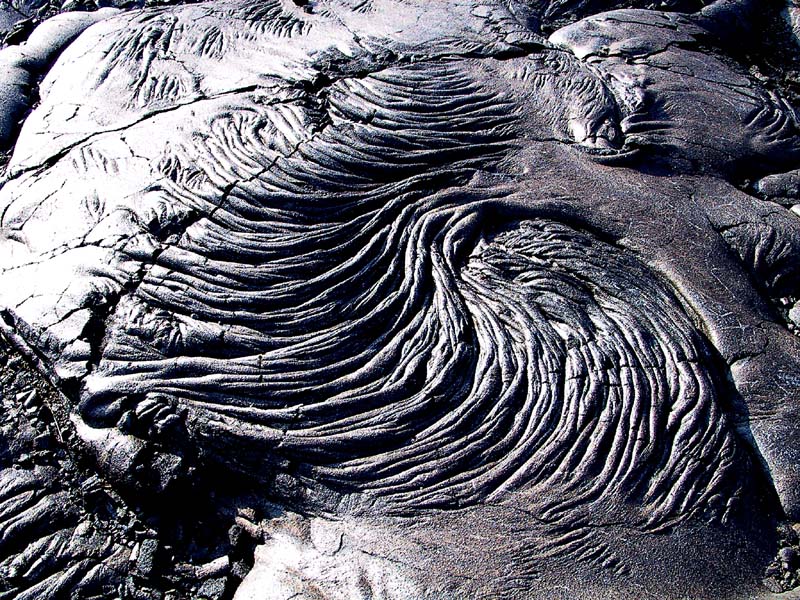
lava flow
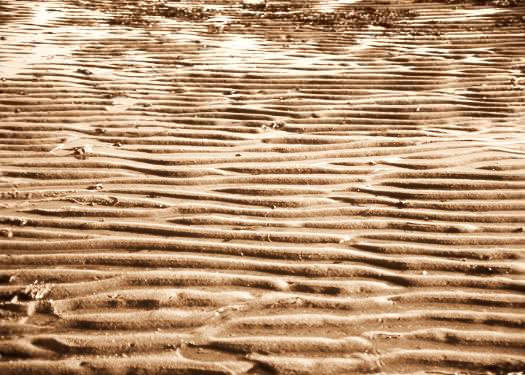
snail shell
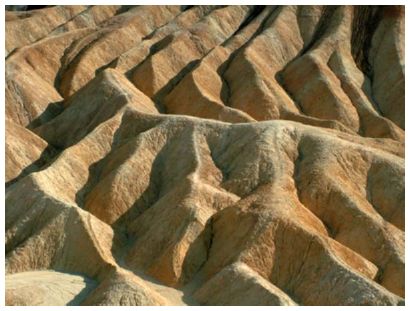
mountains
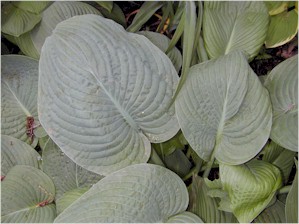
leaves
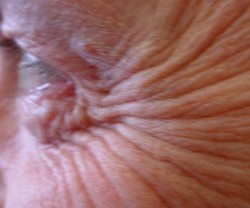
crow’s feet
Lines in the face, tattoos of aging.
Life is proved upon the body
Like needle jabs from a sightless machine.
The older one gets, the more one is conscious of aging. We can barely remember childhood innocence and exuberance. We are surprised by the youthful vitality and unmarked face when we see earlier photos of ourselves. When we look in the mirror, we reluctantly acknowledge the aging mask. It seems that there is no escaping the marks of life.
Every experience that we have, everything that we do and think is registered upon us as surely as the steady embroidery of a tattoo artist. But to a large degree, the pattern and picture that will emerge is up to us. If we go to a tattoo artist, it is we who select the picture. In life, it we who select what we will become by the actions we perform. There is no reason to go through life thoughtlessly, to let accident shape us. That is like allowing oneself to be tattooed by a man with no sight. How can you help but turn old and ugly?
Whether we emerge beautiful or ugly is our sole responsibility.
One Saturday sometime in 1968, there was a big demonstration against the war in Vietnam in San Francisco. Many of us Zen students wanted to go, but instead we came to hear Suzuki-Roshi’s lecture. At that time I was a full-time antiwar activist, working as an organizer and draft counselor. The big issue on my mind was, “How does zazen fit in with my anti-war position?” After the talk, I raised my hand and asked, “Suzuki-Roshi, What is war?” Immediately he pointed to the three by six foot bamboo mat on the floor, and said, “When two people sit down there, they each want to smooth out their side of the mat so there are no wrinkles. And when the wrinkles meet in the center, that’s war.”
…
“Taking sides” means, “I want my side of the mat to be smooth. You say you have wrinkles on your side? Sorry about that.” These wrinkles are not just some irritation we are trying to get rid of. When we say we want to smooth out our wrinkles, what we’re really talking about is our fear. And not just ordinary fear, but the deepest fear of all, the fear of being extinguished, the fear of being nobody, of not being loved, of being alone, of being snuffed out. This fear lies at the root of our humanity, and drives all our choices. To exist as a human being means to have this fear. When we talk about smoothing the mat, we may be saying, “I want your land, your water, or your wealth.” But what we are really saying is, “I just to want exist and feel safe. I want to be OK, to be smooth.” I want my fear not to be there.
In the Genjo koan, Dogen says, “To study Buddhism is to study the self.” What he means is to thoroughly look at what it is to be here, until you touch the root of why we want to smooth the mat. This is what is called clinging in Buddhism, the source of all suffering. There’s no way to be enlightened unless you’re willing to face this fear. And the minute you touch it, you touch everyone’s fear. This is where real compassion begins. We usually think of compassion as something like empathy, feeling sorry for a starving child, an injured person. The compassion of Buddhism is a little different; it starts when we touch our own fear. And then we immediately understand that this fear is the same for all people. We say, “Oh my gosh! We’re all on the same mat. You’re smoothing the wrinkles because you’re afraid, I’m smoothing the wrinkles because I’m afraid. Now I understand; we’re both afraid!”
— Lewis Richmond
In American society, we are afraid of wrinkles. We have companies making billions of dollars selling wrinkle cures and preventatives, and plastic surgeons making fortunes doing facelifts. Our society is so afraid of wrinkles in our skin, we are willing to spend small fortunes to get rid of them. And that’s just the ones on our faces.
We also spend billions of dollars on medications to get rid of the wrinkles in our personality, even treating the youngest among us for ADHD, although to most people, the many anxious youth unable to sit still in the classroom seem merely to be normal little boys and girls possibly hyped up on sugar and junk food. (Yes, I know there are some legitimate reasons to treat ADHD, but it’s way over-diagnosed). We treat personality disorders and depression and anxiety so that everyone can fit in to our desperately fast-paced, overworked, hyperdrive nation.
We spend military fortunes to try and control the world’s oil supply so we won’t have to be inconvenienced by driving fuel-efficient, smaller vehicles or living close enough to our jobs to walk to work or ride public transportation. We spend fortunes on electricity to cool our oversized McMansions, fortunes on junk and trinkets from WalMart buying goods made in China for our convenience, while borrowing from the Chinese to pay for them. Yes, the mat under us is not only smooth, it is padded. It is no longer a mere bamboo mat we sit on, but a luxurious lounge chair resting on a thick-pile carpet. We have smoothed our wrinkles, and left the world to deal with all the wrinkles on their own part of the mat. And wonder why everyone seems to hate us when we step off our own part of the mat onto theirs.
What distinguishes a Buddha from an ordinary person is that there is a transparency for a Buddha that is not available to ordinary people. The Buddha sees the fear in everyone, and how it makes us obsessively want to keep smoothing the wrinkles on our side of the mat. Some people may have guns, while others don’t, some may be big, some small, some strong, some weak. Our feeling naturally goes out to the weak, but even the powerful have this fear. In fact they have an especially bad case of it. The fear encompasses everyone. — Lewis Richmond
So, what are we Americans most afraid of? Losing our youth, losing our comforts, losing the things that make our lives so privileged. We are afraid of death, even those who seem to most embrace the idea of God and heaven. They don’t really want heaven, they want their own version of heaven, here and now, on earth. They want to be eternally young, eternally comfortable. And don’t even talk to them about actually dying – they won’t go to their wars to fight and risk dying; they will send other people’s children to do that.
While I’m talking, I’m looking at that big statue of Avalokitesvara there across the room, the Bodhisattva of compassion. When I was young, I didn’t care much for statues. We don’t need statues for Zen, I thought, just a mat and a cushion. Now that I’m older I realize these statues are teachings. The faces on Buddha statues are actually realization faces. The face is always calm, but with a sort of smile. It’s a Buddha face. When we look at it, we immediately say, “That’s a Buddha.” This is a visual manifestation of the Middle Way, of not taking sides. The word “Avalokitesvara” means “the one who sees.” What kind of seeing is this? What does Avalokitesvara see?
If we really saw how the world really is, with all of its wrinkles, all of its suffering, we wouldn’t be able to stand it. Not with our ordinary way of seeing. We can only absorb it with our Buddha eye, our awakened eye, the eye of Avalokitesvara. Some people may think that the purpose of religion is to create a wrinkle free world—a spiritual Disneyland. But there’s no such thing as a wrinkle free world; this is Buddhism’s first Noble Truth. Real liberation comes not from building a bigger and better steam iron to smooth the wrinkles. It comes from realizing the inevitability and seamlessness of the wrinkles. — Lewis Richmond
Real liberation in our own lives comes from seeing our wrinkles and understanding their inevitability, and the seamless way they fit into our own lives, and the lives of those around us. As we see our children become young adults in their own right, we understand the passage of time and we move to new phases of our own lives. We move to having the position of the elder, with our wrinkles and, hopefully, the wisdom that comes with those wrinkles. Wrinkles are neither beautiful or ugly – they are the seamless ties of our lives to time itself.
For more thoughts on wrinkles, aging, and what it’s really like to get older, I recommend Ronni’s wonderful blog at Time Goes By.
6 Responses
I’m getting a few of those … fortunately my eyes are deteriorating at about the same rate so I can’t see the wrinkles in the mirror … I don’t see the aging guy.
That was a wonderful post. I appreciate your sharing that.
Great post.
I don’t fret much about looking older. Each of us gets to be every age exactly once, each of us has to be every age exactly once. There are no exceptions. Obsessing about appearing to be an age we are not is a waste of energy, thus a waste of part of life.
Our government is paupering us, with our permission, for things that don’t matter. It makes me sad.
This is wonderful! I am so glad you reposted it.
A good read. Luckily I’ve stripped away a lot of the crap from my life, I enjoy the wrinkles, I don’t watch tv, have been self employed twenty five years and basically do as I wish’ish. I am not overlybright, tho enjoy Snyder and Pound and lots of others. I’m learning written Mandarin which opens up elementary Tang poems for me. Thankyou for you blog.
I am having the same experience as Mark Thoma. I am starting to see the lines, but my vision is fading. What if we make wrinkles sexy? Why not say “Have you ever seen such beautiful smile lines? His/Her crows feet are just so sexy. I am just grateful that I have skin that can still feel my husbands wonderful stroke; so what if there is a few lines on it?